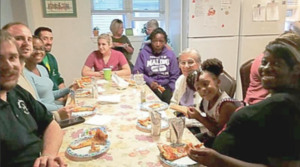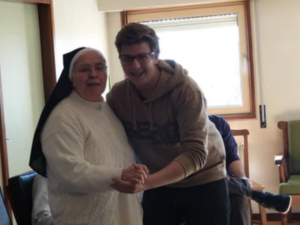It was one evening after dinner, while having light conversations with some of the brethren of our Dominican community in Manila when I realized that I have been assigned in the same convent for almost 14 years already. A year after I was ordained in 1993, I have been assigned to St. John Lateran Convent in Intramuros, Manila, working as a school administratorat Colegio de San Juan de Letran ever since. And so I entertained the thought of volunteering myself to be assigned to General Santos City, one of our mission areas in Mindanao. I told the mission promoter to tell the Prior Provincial about it, while I daydream of enjoying fresh grilled tuna or tuna sashimi, as the city is known as the “Tuna Capital of the Philippines”.
After the Provincial chapter, the Prior Provincial told me that he heard some good news about me, since I wanted to volunteer to go to the missions. I smiled and thought that I was going to get what I wished for. But the Prior Provincial told me that since I wanted to volunteer to go to the missions, he was assigning me not to General Santos City, but to Babuyan Islands! Babuyan Islands is a group of five remote and isolated islands in the north of the Philippines where Filipino Dominicans administer a school and a parish on two of the more populated islands.
Back then, the islands do not have electricity, no public markets, no hospitals, no doctors, and no internet! It is often visited by typhoons, which makes crossing the Babuyan Channel very challenging. Later, I realized that those times made me closer to God, really praying hard that I would make it alive after every voyage on jam packed and overloaded boats in treacherous sea conditions! I have one word to describe how it was to cross the sea to and from the island – it’s suicidal! That is why when my friends and acquaintances knew about my new assignment, they asked me what wrongdoing I have done to be sent to this far flung island. I was sent alone to Camiguin Norte Island in 2008 to be the parish priest of St. Vincent Ferrer Parish and the school directorof Lyceum of Camiguin, a mission high school of the Dominican mission station on the island. The island belonged to a fifth class municipality, which means that more than fifty percent of its population lives in poverty. The people’s sources of livelihood on the island are fishing and farming. About one third of its approximately 6,000 population are of school age. There are 4 public elementary schools, a public high school and the Dominican mission high school. There is no college education on the island, and those who would like to pursue higher education would have to go to the mainland, about 4 to 6 hours by boat… depending on the weather and the size and load of the boat!
On my first month in the island, some church volunteers told me that there was a scheduled mass on the following day, since it was the feast day in one of the settlements where there is a small chapel. When I asked them where the chapel is located, they told me it was just nearby. And so on the following morning, we started walking at about 6:00 AM, since there are no roads – only trails, and there is also no land transportation on the island. When it was almost 8:00 AM and we have not yet reached the chapel, I asked them why they said it was near, when in fact it was very far. They said that they were afraid I might not come if they told me that it was very far! Afterwards, when I looked at the map, we walked for approximately 10 kilometers up the mountains.
Before reaching the chapel, I met a group of elementary students who were walking on their way to school. I greeted themgood morning and introduced myself as their new parish priest. When I asked them where their school was, they told me that it was near the parish church. I suddenly realized that these children walk for about one or two hours every day to go toschool! If it is raining, they use banana leaves because they do not have umbrellas. They carry their slippers because it gets stuck on the muddy trails. They do not have school bags to put their notebooks or pad paper, they use plastic bags. If some students do not have a pencil, because either they do not have money to buy or there are no pencils available in the stores, those who have would sometimes share them by breaking the pencils into pieces so that each one may have a piece to write with.
In the summer of 2009, a group of mountaineers and photographers came to my parish on a whale watching expedition. They also brought pencils and other school supplies to be distributed to the school children. They call their group the Black Pencil Project. They go to remote and isolated communities to help children with the tools they need for their education. The following year, I volunteered to do the same thing as what the Black Pencil Project was doing. I tried to ask for donations of schools supplies, with the help of volunteers, to be donated to the children. We were able to gather enough school supplies to provide about 1,200 elementary school children. Most of the volunteers became regular visitors of the island. They do not only provide school supplies to the children, they also teach the community how to protect and to take care of the environment. We were also able to build a public library for the community, with the help of generous benefactors. Eventually, I became a core group member of the Black Pencil Project a few years later. Now on its 10thyear, the Black Pencil Project still goes to Babuyan Islands every summer, when weather conditions are much better, to help the children with their dreams for a brighter future.
Fr. Jose Martin Sibug, OP
Promoter of the Missions 2016-2020
Dominican Province of the Philippines



